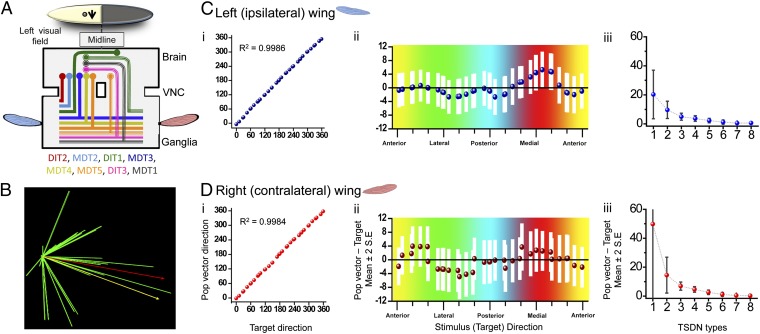Fig. 5.
The TSDN population vector codes direction of the prey with high accuracy. (A) A target moving in the left side of the visual field activates the subset of TSDNs shown in the diagram. The population of TSDNs providing inputs to the left (nine cells) and right (seven cells) wings differ. (B) Graphical representation of a dragonfly TSDN population vector. Contributing TSDN vectors (green), stimulus direction (yellow), and population vector (red) are shown. (C and D) Population vectors for the left (C) and right (D) wings were calculated for all presented trajectories. (C, i and D, i) The population vectors, binned in 18°, are strongly correlated with the target direction. Left wing circular R = 0.9986 (P < 0.001) and right wing R = 0.9984 (P < 0.001). (C, ii and D, ii) The direction of the target and the direction of the population vector are not significantly different in any direction because the difference between these two parameters is close to zero (dotted values) and because zero is within the 95% confidence interval (white bars). Colors refer to the direction of the presented target. The data concern targets moving in the left side of the visual field, so targets that traveled toward the medial part of the animal correspond to the red section. (C, iii and D, iii) On average, removing two types of TSDN from the population (six cell types used) does not impact the accuracy of the population vector significantly. For the left wing, three TSDN types are, on average, sufficient to provide a population vector whose bias is within 10° of the presented target direction.

